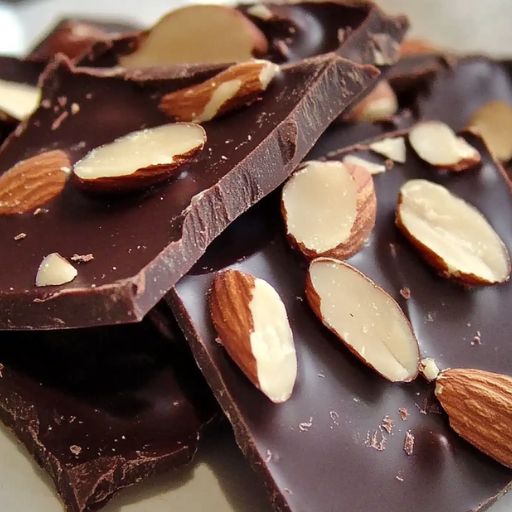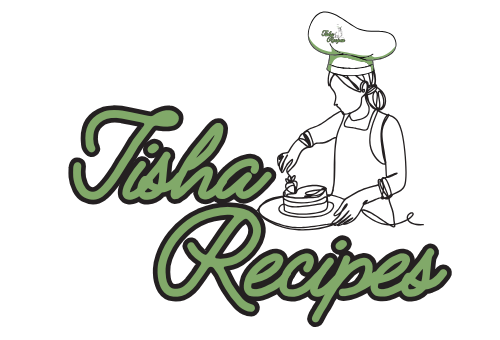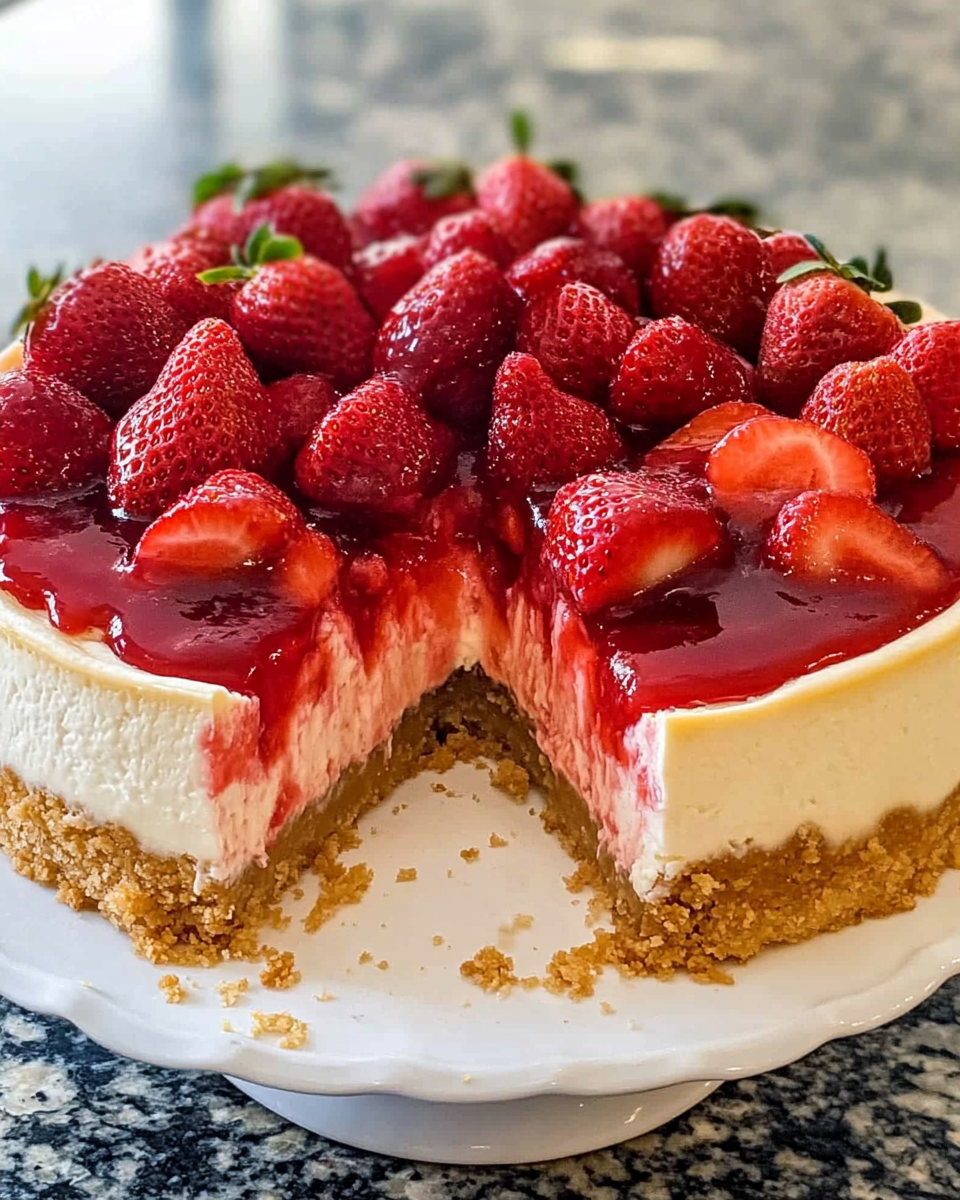
Dark Chocolate Almond Bark is a timeless confection loved for its simplicity, rich flavor, and satisfying crunch. It merges the bold intensity of dark chocolate with the nutty texture of almonds, making it both indulgent and nourishing. Whether enjoyed as a quick snack, a gift during the holidays, or part of a dessert spread, this treat never fails to impress.
Its popularity continues to soar, thanks in part to the rise of healthy snacking trends. People increasingly prefer desserts that balance indulgence with health benefits, and dark chocolate almond bark delivers. It’s naturally gluten-free, dairy-optional, and can be easily modified to fit vegan, keto, or paleo diets.
Despite being easy to make at home, many still turn to store-bought versions. But homemade bark offers far more control over ingredient quality, flavor combinations, and texture.
Brief History and Cultural Significance
Origins of Chocolate Bark
The concept of chocolate bark originated in Europe, where chocolatiers experimented with layering chocolate and nuts. The “bark” term reflects its rustic, jagged appearance, resembling the bark of a tree.
Initially, this treat emerged as a way to use leftover chocolate and nuts, often appearing around holidays and festive occasions. The irregular shape meant it was easy to break and share, making it ideal for communal celebrations.
The Almond’s Place in Culinary Traditions
Almonds have a storied place in culinary history. From ancient Persia to the Mediterranean basin, almonds were revered for their versatility and health benefits. They’ve long been included in celebratory dishes, including marzipan, baklava, and brittles.
Almonds symbolize prosperity and health in many cultures. Pairing them with chocolate added a layer of luxury and indulgence to an already prized ingredient.
The Fusion
Dark chocolate became prominent in the 20th century when cacao purity and health benefits gained appreciation. As the health-conscious movement gained traction, confectioners began favoring darker varieties of chocolate.
Combining dark chocolate and almonds represented both a culinary and cultural evolution. It unified indulgence and wellness, tradition and innovation, in a single, elegant treat.
Preparation Phase & Tools to Use
Prep Time; Cook Time; Cool Time; Total Time; Servings; Yield
-
Prep Time: 10 minutes
-
Cook Time: 5 minutes
-
Cool Time: 30–60 minutes (depending on method)
-
Total Time: 45–75 minutes
-
Servings: 10–12 pieces (approximate)
-
Yield: One 9×13-inch sheet pan of bark
Essential Tools and Equipment
To create perfect bark every time, gather the following tools:
-
Double boiler or microwave-safe bowl for melting chocolate.
-
Silicone spatula for smooth mixing.
-
Chef’s knife for chopping almonds (if not pre-sliced).
-
Baking sheet (preferably rimmed) for even spreading.
-
Parchment paper or silicone baking mat to prevent sticking.
-
Refrigerator or freezer for setting the bark.
Importance of Each Tool
-
The double boiler allows gentle melting, reducing the risk of burning the chocolate.
-
A microwave-safe bowl is a convenient alternative but requires close monitoring.
-
A silicone spatula ensures every bit of chocolate is spread evenly.
-
A sharp knife guarantees clean, consistent almond pieces, maximizing texture.
-
Parchment paper or a silicone mat creates a nonstick surface, making cleanup easy.
-
Cooling appliances rapidly set the bark, preserving gloss and snap.
Preparation Tips
-
Use dry, clean tools: Water and chocolate don’t mix. Even a drop of water can cause chocolate to seize.
-
Roast almonds beforehand: Roasting deepens the nutty flavor. Bake at 350°F (175°C) for 8–10 minutes.
-
Choose high-quality dark chocolate: Aim for 70% cacao or higher. Couverture chocolate is ideal.
-
Avoid chocolate chips: They contain stabilizers that hinder smooth melting.
-
Chop evenly: Uniform almond sizes ensure balanced texture in every bite.
-
Use coconut oil sparingly: It gives chocolate a glossy finish and smoother mouthfeel.
Ingredients List (with Measurements)
Basic Ingredients:
-
10 oz (285g) dark chocolate (70% cacao or higher)
-
1 cup (150g) whole or sliced almonds (roasted)
-
1 tablespoon coconut oil (optional)
-
Pinch of sea salt flakes (optional, for garnish)
Optional Add-Ins:
-
2 tablespoons dried cranberries or cherries
-
1 tablespoon orange zest
-
1/2 teaspoon ground cinnamon
-
A pinch of chili flakes for a spicy kick
Ingredient Notes:
-
Dark Chocolate: Higher cacao means more antioxidants and less sugar.
-
Almonds: Choose unsalted roasted for maximum control over flavor.
-
Coconut Oil: Helps the chocolate stay smooth but softens the final product.
-
Sea Salt: Balances sweetness and intensifies flavor.
Step-by-Step Instructions
Step 1: Prepare the Almonds
-
If using raw almonds, spread them on a baking tray.
-
Roast at 350°F (175°C) for 8–10 minutes, stirring halfway through.
-
Let them cool completely before adding to chocolate.
Step 2: Melt the Chocolate
Double Boiler Method:
-
Fill the bottom of the double boiler with 1 inch of water.
-
Heat gently until simmering, not boiling.
-
Place chopped chocolate in the top bowl and stir until smooth.
Microwave Method:
-
Add chocolate and coconut oil to a microwave-safe bowl.
-
Heat in 30-second bursts, stirring each time.
-
Stop once 90% melted and stir until completely smooth.
Step 3: Combine Chocolate and Almonds
-
Add the roasted almonds to the melted chocolate.
-
Mix well to ensure each piece is coated.
Step 4: Spread on Baking Sheet
-
Line a baking tray with parchment paper or a silicone mat.
-
Pour the mixture onto the tray and spread to about 1/4-inch thickness.
-
Use a spatula to smooth the surface.
Step 5: Add Optional Toppings
-
Sprinkle sea salt flakes over the top.
-
Add dried fruit, orange zest, or spices if desired.
Step 6: Set the Bark
-
Refrigerate for 30 minutes or freeze for 15 minutes.
-
Ensure the bark is completely firm before removing.
Step 7: Break into Pieces
-
Lift the bark off the tray.
-
Use your hands or a sharp knife to break it into rustic pieces.
Step 8: Store Properly
-
Store in an airtight container in a cool, dry place.
-
Lasts up to 2 weeks at room temperature, or a month refrigerated.
Side Dish Recommendations
Pairing Dark Chocolate Almond Bark with complementary sides enhances both its flavor profile and its presentation. Whether you’re serving it as a standalone snack or part of a curated dessert board, here are eight thoughtful pairing ideas.
Fresh Fruit Platter
Fresh fruits introduce acidity and juiciness that balance the richness of dark chocolate. Berries—such as raspberries, strawberries, and blueberries—are ideal. Their tartness contrasts beautifully with the bitter undertones of dark chocolate.
You can also add orange slices, apple wedges, or pomegranate seeds. These fruits not only add visual appeal but also elevate the flavor with natural sugars and moisture.
Cheese Assortment
Pairing dark chocolate bark with cheese creates a gourmet experience. Aged cheeses like gouda or sharp cheddar add a savory element that balances the sweet and bitter contrast. Soft cheeses like brie or camembert offer a creamy texture that complements the bark’s snap.
Experimenting with blue cheese or gorgonzola introduces pungent, complex notes that adventurous palates will appreciate.
Wine Pairings
A well-chosen wine can accentuate the cocoa notes in the bark while highlighting the nutty depth of almonds. Full-bodied red wines like Cabernet Sauvignon, Zinfandel, or Merlot work well. Port or a dark cherry-flavored dessert wine can also enrich the bark’s chocolate profile.
For those who prefer whites, a rich Chardonnay or sweet Riesling can offer interesting contrasts.
Coffee and Espresso
Coffee’s natural bitterness is an ideal match for dark chocolate. A bold espresso shot intensifies the bark’s richness. Lighter brews, such as a latte or cappuccino, create a creamy counterbalance.
Serving bark with coffee makes for a perfect afternoon treat or after-dinner dessert pairing.
Ice Cream
Use broken shards of almond bark as a topping for vanilla or coffee ice cream. The cold creaminess of ice cream contrasts beautifully with the crisp texture of chocolate bark.
For a sophisticated twist, consider pairing with pistachio or salted caramel ice cream. The result is a textural and flavor delight that satisfies every bite.
Yogurt Parfaits
Layering the bark with Greek yogurt and fresh fruit creates a breakfast or snack option that’s both indulgent and nutritious. Crushed bark can replace granola for a high-protein, lower-sugar topping alternative.
This is a great way to turn leftover bark into a versatile ingredient beyond dessert.
Nut Mixes
Combining bark with spiced or salted nut mixes amplifies the crunch factor. Choose almonds, cashews, pecans, or pistachios seasoned with rosemary, paprika, or cinnamon for bold flavor combinations.
You can create snack bowls ideal for parties, where each bite contrasts and complements the next.
Biscotti or Shortbread
Pairing bark with biscotti or buttery shortbread cookies makes for an elegant dessert offering. These crispy cookies echo the bark’s texture, while offering subtle sweetness that doesn’t overpower.
Add a small bowl of melted chocolate for dipping and elevate your presentation effortlessly.
Nutritional Information & Health Benefits
Caloric Content
Dark chocolate almond bark is calorically dense but nutrient-rich. A standard serving (approximately 1 oz or 28g) contains between 150 and 180 calories, depending on chocolate cacao percentage and the amount of almonds.
Though it may be high in calories, these are nutrient-dense calories. That makes it a better snack option compared to heavily processed sweets.
Macronutrient Breakdown
-
Fats: Healthy fats dominate the profile. Dark chocolate contains stearic acid—a saturated fat that doesn’t raise LDL cholesterol. Almonds add monounsaturated fats, which support heart health.
-
Protein: A single serving offers 3–5 grams of protein, primarily from almonds.
-
Carbohydrates: Bark contains around 10–15 grams of carbs per serving. This includes natural sugars and dietary fiber.
Micronutrients
-
Magnesium: Present in both dark chocolate and almonds, supporting muscle and nerve function.
-
Iron: Essential for oxygen transport in the blood, found in notable amounts in dark chocolate.
-
Vitamin E: A powerful antioxidant from almonds that helps protect cells from oxidative stress.
-
Calcium and Phosphorus: Almonds supply these minerals to support bone health.
Health Benefits
The treat goes beyond indulgence; it offers real wellness value when consumed in moderation.
1. Antioxidant Powerhouse
Dark chocolate is rich in flavonoids, which neutralize free radicals and reduce oxidative stress. This can contribute to better skin, cardiovascular health, and aging resilience.
2. Heart Health
Almonds help lower bad cholesterol (LDL) and improve good cholesterol (HDL). Combined with dark chocolate’s heart-protective benefits, bark becomes a snack that supports cardiovascular well-being.
3. Blood Sugar Regulation
Though sweet, bark has a lower glycemic impact than processed candy. Almonds slow sugar absorption, stabilizing blood sugar and preventing spikes.
4. Mood Enhancement
Dark chocolate stimulates serotonin and endorphin production. This can improve mood and reduce stress, making this treat not just good for the body but also for emotional wellness.
5. Gut-Friendly Fiber
The bark provides dietary fiber that aids digestion and supports healthy gut bacteria. Almond skins, in particular, have prebiotic properties.
Common Mistakes to Avoid & How to Perfect the Recipe
Even though Dark Chocolate Almond Bark is simple, a few missteps can affect texture, taste, and appearance. Here’s how to avoid them and achieve consistent results.
Overheating the Chocolate
The Mistake: Melting chocolate at high temperatures can cause it to seize or scorch.
The Fix: Always melt chocolate slowly over low heat. Stir continuously and remove from heat once 90% melted, letting residual warmth finish the job.
Skipping Roasting the Almonds
The Mistake: Using raw almonds without enhancing flavor.
The Fix: Roasting brings out the natural oils and intensifies the nutty flavor. Roast at 350°F for 8–10 minutes and cool completely before mixing.
Improper Cooling
The Mistake: Leaving bark to set at room temperature can result in a dull, soft finish.
The Fix: Use the fridge or freezer to speed up the setting. The cold ensures a shiny surface and a crisp texture.
Incorrect Thickness
The Mistake: Pouring the bark too thick or too thin affects breakability and mouthfeel.
The Fix: Aim for an even 1/4-inch layer. Spread uniformly to ensure each bite has a balanced chocolate-to-almond ratio.
Not Using Parchment Paper
The Mistake: Skipping parchment results in chocolate sticking to the tray.
The Fix: Line the tray with parchment paper or use a silicone mat. This also makes cleanup easier.
Storing Improperly
The Mistake: Leaving bark exposed to air or moisture can cause it to become soft or stale.
The Fix: Store in an airtight container in a cool, dry place. Avoid storing in overly warm areas to prevent melting.
Choosing the Wrong Chocolate
The Mistake: Using chocolate chips or overly sweet chocolate compromises quality.
The Fix: Choose couverture or bar chocolate with at least 70% cacao. Avoid chips unless they’re designed for melting.
Using Too Many Add-Ins
The Mistake: Overloading bark with too many flavors or textures.
The Fix: Stick to 1–2 add-ins to maintain balance. Focus on complementing rather than overwhelming the chocolate.
Expert Tips, Notes, Storing, and Reheating
Mastering Dark Chocolate Almond Bark takes more than just following a recipe. These professional-level tips, practical notes, and storage guidelines will ensure your bark stays top-quality from first bite to last.
Expert Tips for Mastery
-
Tempering for a glossy finish: If presentation matters, temper your chocolate. This process ensures a shiny, snap-perfect finish without bloom (that whitish coating chocolate sometimes develops). To temper, melt two-thirds of your chopped chocolate, remove from heat, and stir in the remaining third until fully melted and glossy.
-
Infuse flavor: Add subtle depth by steeping crushed coffee beans, orange peel, or tea leaves in the melted chocolate for a few minutes before straining and setting.
-
Create layers: Make two-toned bark by layering different types of chocolate. Spread one layer, let it set partially, then spread another layer on top.
-
Use molds for elegance: Silicone molds create bark in uniform shapes, making it ideal for gifting.
-
Finish with texture: Sprinkle the surface with toasted coconut, cocoa nibs, or even puffed quinoa for added crunch and contrast.
-
Control sweetness: For less sugar, use 85% cacao chocolate and omit any dried fruits or syrups. This lets the natural sweetness of almonds and chocolate shine through.
Notes and Customization Ideas
-
Make it vegan: Use vegan dark chocolate and ensure no dairy is added. Most high-cacao chocolates are naturally vegan, but check the label to confirm.
-
Go keto: Choose sugar-free dark chocolate (sweetened with erythritol or stevia) and avoid dried fruits.
-
Add protein: Mix in protein crisps or use almond butter swirls for a post-workout treat.
-
Festive versions: Add crushed peppermint for a holiday variation or sprinkle with edible gold for a celebration-ready finish.
-
Spice it up: Cayenne pepper, cinnamon, or ground ginger can turn your bark into a warming winter treat.
-
Nut variations: Replace almonds with cashews, macadamias, or hazelnuts. For a smoky twist, use roasted pecans.
-
Kid-friendly option: Use sweeter chocolate, mix with mini marshmallows and graham cracker pieces for a s’mores-style bark.
-
Texture control: Rough-chopped almonds give more crunch. Finely chopped almonds create a uniform, nutty texture throughout.
How to Store Dark Chocolate Almond Bark
Proper storage is key to maintaining the taste, texture, and appearance of your bark.
-
Cool and dark: Store in a cool, dry place away from direct sunlight and heat sources.
-
Airtight container: Use a sealed container to prevent absorption of moisture or odors from other foods.
-
Layering protection: Place parchment paper between stacked layers to prevent sticking or smudging.
-
Shelf life: The bark lasts 2–3 weeks at room temperature, or up to 2 months refrigerated. For longer storage, freeze it.
Freezing Instructions
-
Wrap it right: Place pieces in a single layer on a tray to freeze for 1 hour. Then, transfer to a freezer-safe bag or airtight container.
-
Avoid moisture: Wrap tightly in plastic wrap or foil to prevent freezer burn.
-
Thawing: Let the bark thaw in the fridge overnight before serving to avoid condensation ruining the chocolate’s texture.
Reheating Tips
While bark is typically served cold or at room temperature, you can slightly warm it for soft edges:
-
Microwave in brief bursts: Heat for no more than 5–8 seconds at a time.
-
Low oven setting: Use 200°F (93°C) for 1–2 minutes. Watch closely.
-
Avoid complete melting: Reheating should soften it slightly, not liquefy the chocolate.
Frequently Asked Questions (FAQs)
Can I use milk chocolate or white chocolate instead of dark chocolate?
Yes, but expect a different flavor profile. Milk chocolate is sweeter and creamier, while white chocolate lacks cacao solids and is more buttery. The health benefits of dark chocolate will not apply, but these variations are delicious in their own right.
How long does homemade dark chocolate almond bark last?
When stored in an airtight container in a cool, dry place, it lasts up to 3 weeks. Refrigeration can extend this to 2 months, while freezing can prolong shelf life up to 6 months. Always use airtight storage methods to retain freshness.
Can I use raw almonds without roasting them?
Technically, yes, but roasting deepens the flavor and enhances crunch. Raw almonds may have a slightly chewy texture and more muted taste. Roasting also helps remove any residual moisture that could affect the bark’s stability.
Is tempering necessary for bark?
No, it’s not required. Bark sets well without tempering, especially when chilled. However, tempering does enhance shine and snap, especially if the bark will be gifted or displayed. It’s a professional touch that elevates appearance.
Can I add sea salt on top?
Yes, sea salt is a popular addition that enhances flavor and provides a delightful contrast to the sweetness. Use large flakes for the best effect. Sprinkle just before the chocolate sets for adhesion without sinking.
What can I substitute for almonds?
You can use any nut, including walnuts, hazelnuts, pistachios, or pecans. For a nut-free option, try sunflower seeds, pumpkin seeds, or crispy rice cereal. Each alternative offers a unique texture and flavor experience.
Is it okay to refrigerate or freeze bark?
Absolutely. Refrigeration keeps it firm and crisp. Freezing is great for long-term storage. Just ensure the bark is sealed well to avoid condensation or flavor absorption from other foods.
Can I make it sugar-free?
Yes. Use sugar-free dark chocolate sweetened with stevia, monk fruit, or erythritol. Avoid dried fruits with added sugars. This version works well for diabetics or those on low-carb or keto diets.
Why did my chocolate bloom or get white spots?
This is likely caused by cocoa butter separating due to temperature fluctuations. It’s harmless but affects appearance. Avoid storing bark where it’s subject to frequent temperature changes. Tempering also helps prevent bloom.
What’s the best way to gift this bark?
Wrap in clear cellophane bags with a ribbon, place in decorative tins, or pack in eco-friendly kraft boxes. Add a handwritten note with serving suggestions or the flavor inspiration. It’s an excellent edible gift for birthdays, holidays, or care packages.
Can I double the recipe?
Yes, easily. Just ensure you have a large enough tray or work in batches. Spreading too thick can affect texture, so use multiple trays if needed for an even layer.
What should I do if my chocolate seizes?
Add a small amount of warm water (1 tsp at a time) and stir vigorously. While it won’t be suitable for bark at that point, you can repurpose it for sauces or frostings.
Conclusion
Dark Chocolate Almond Bark is more than a simple treat. It’s a versatile canvas that celebrates the harmony of bold cacao and the satisfying crunch of almonds. It adapts to any occasion—from holiday gatherings to solo indulgences—with ease and elegance.
Making it at home offers a richer experience, allowing you to control ingredients, tailor flavors, and create a healthy sweet that fits your lifestyle. Whether you’re gifting, snacking, or building a dessert board, this bark delivers beauty and bold flavor in every shard.
Experiment with add-ins, elevate with tempered chocolate, or enjoy the minimalist original—there’s no wrong way to enjoy this timeless confection. Master it once, and you’ll always have a go-to recipe that impresses every single time.




Leave a Comment